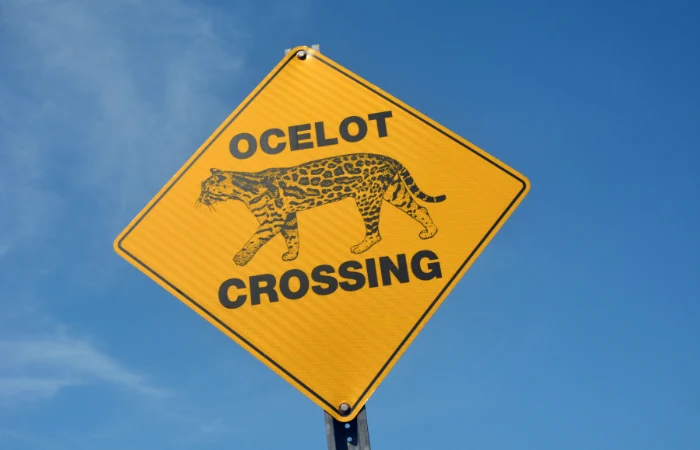The Texas ocelot, a small but striking wildcat, once roamed vast areas of the Southwestern U.S. Today, fewer than 100 individuals are confined to two isolated populations along the Texas Gulf Coast, a situation that has placed the species in a precarious position.
A new initiative, however, spearheaded by a partnership between the U.S. Fish and Wildlife Service, state agencies, and private entities, aims to change this dire narrative.
This effort, which involves captive breeding and reintroduction, seeks to establish a new ocelot population in Texas. It represents a bold step in conservation, offering hope for the survival and recovery of these elusive felines in the U.S.
This article explores the journey of the Texas ocelot from the brink of local extinction to the cusp of a hopeful resurgence.
Why Bother With The Texas Ocelot?
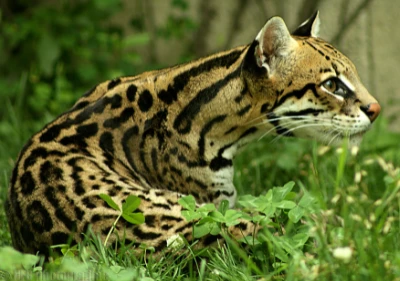
Ocelots play a crucial role in the local ecology of their habitats, primarily in the regions they inhabit, such as parts of Texas. As mid-sized predators, they’re integral to maintaining the balance of the ecosystems. Ocelots help control the populations of smaller mammals and rodents, which in turn influences the health and diversity of plant life.
This predatory role aids in keeping a check on the prey populations, preventing overgrazing, and ensuring a balanced distribution of various species. Truly, their presence contributes to the overall biodiversity of the region, which is essential for a resilient and functioning ecosystem.
Also, they’re really cool to look at!
The Ocelot's Struggle: Isolation and Inbreeding Has Created A Dire Situation For Texas Ocelots
The Texas ocelot, a species emblematic of the region’s rich biodiversity, faces a critical survival challenge. With less than a hundred left in the wild, these ocelots are isolated in two small areas: El Sauz Ranch and Laguna Atascosa National Wildlife Refuge. This isolation has led to severe inbreeding, diminishing the genetic diversity vital for the species’ health and resilience.
The Impact of Habitat Loss and Fragmentation
Habitat loss and fragmentation have been significant factors in the ocelot’s decline. As their natural habitat shrank due to human development, the remaining populations became isolated, leading to genetic bottlenecks. This not only affects their immediate health but also their long-term adaptability to environmental changes.
Efforts to Combat Inbreeding
Conservationists are deeply concerned about the impact of inbreeding on these small populations. Reduced genetic diversity can lead to increased vulnerability to diseases and decreased fertility, compounding the already precarious situation. Efforts to introduce new genetic material into these populations are seen as essential for their survival.
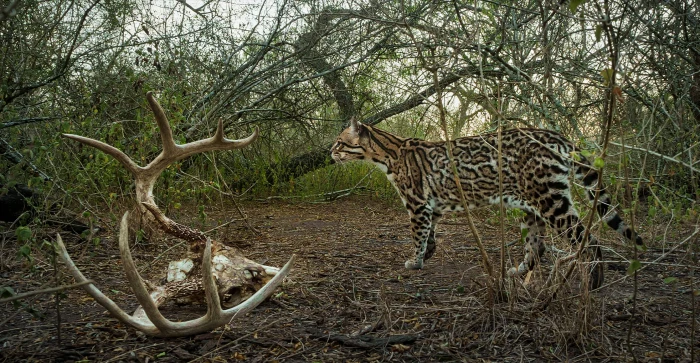
A New Conservation Strategy: Breeding and Reintroduction
In response to the dwindling numbers, a groundbreaking approach has been adopted: breeding ocelots in captivity and reintroducing them into suitable habitats in Texas. This plan marks a departure from more traditional conservation methods, which have focused primarily on protecting existing habitats and populations.
The Role of Captive Breeding
Captive breeding programs aim to increase the ocelot population and enhance genetic diversity. By carefully managing breeding pairs, conservationists hope to produce healthy offspring with a varied genetic makeup, which can then be reintroduced into the wild to bolster existing populations or establish new ones.
Selecting Reintroduction Sites
Choosing suitable sites for reintroduction is critical. Areas are selected based on habitat quality, prey availability, and minimal human disturbance to provide the best chance for the ocelots to thrive. The goal is to create interconnected habitats that allow for greater movement and genetic exchange between populations.
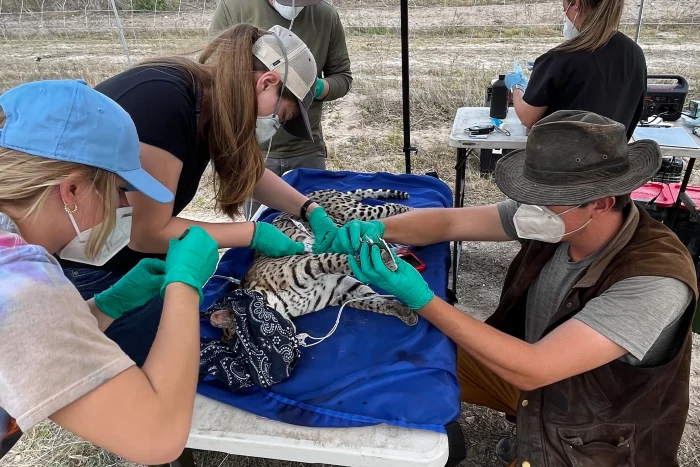
Challenges & Literal Barriers to Ocelot Connectivity
One of the most significant challenges to ocelot conservation is ensuring connectivity between habitats. Physical barriers, such as roads and the U.S.-Mexico border wall, hinder the ocelots’ natural movement patterns, essential for finding mates and establishing new territories.
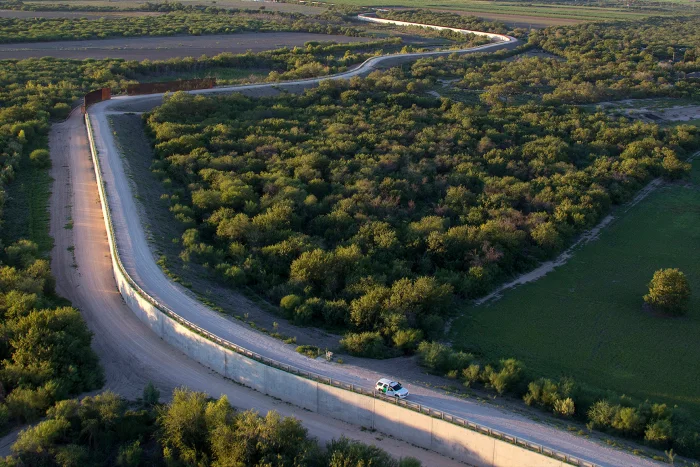
The border wall, in particular, poses a substantial barrier to wildlife movement.
For ocelots, which require large territories to thrive, these barriers can be detrimental, preventing them from accessing new areas and contributing to genetic isolation.
The Role of the East Foundation and Private Landowners
In Texas, where much of the land is privately owned, the role of landowners like the East Foundation is pivotal in wildlife conservation. These private lands, often vast and relatively undisturbed, provide crucial habitats for species like the ocelot.
East Foundation’s Commitment to Wildlife
The East Foundation, a leader in land stewardship, has been instrumental in ocelot conservation efforts. Their commitment extends beyond just providing land; they actively participate in research and collaborate with wildlife agencies to facilitate the breeding and reintroduction program.
Challenges and Opportunities
Working on private lands comes with its unique set of challenges and opportunities. While private landowners have more autonomy in managing their lands, effective conservation requires coordination with state and federal agencies, a balance between land use and wildlife needs, and often, a significant financial commitment.
Potential for Success: Learning from Past Experiences
Previous attempts to reintroduce small wildcats, such as lynxes and bobcats, offer valuable lessons for the Texas ocelot program. Thanks to the trials and tribulations, and eventual successes of these experiences, conservationists know the most important factors involved like habitat quality, post-release monitoring, and community involvement.
Drawing from Other Species’ Success
The successful reintroduction of other species, like the California condor and the red wolf, provides a blueprint for the ocelot program. These cases underscore the need for comprehensive planning, ongoing research, and adaptive management strategies to address unforeseen challenges.
More To Discover
- The Southern Hemisphere Is Drying Out, Scientists Confirm, And That’s A Big Problem For Us All
- Collected Challenges in the Renewables Industry: The Green Energy Sector Has Had Some Bad Days
- How Four Companies Control the Beef Industry: The Aftermath of The Battle for Competition and Livelihoods
- US Heat Pump Manufacturers Triumph in Cold Climate Challenge, Promising Eco-Friendly Home Heating
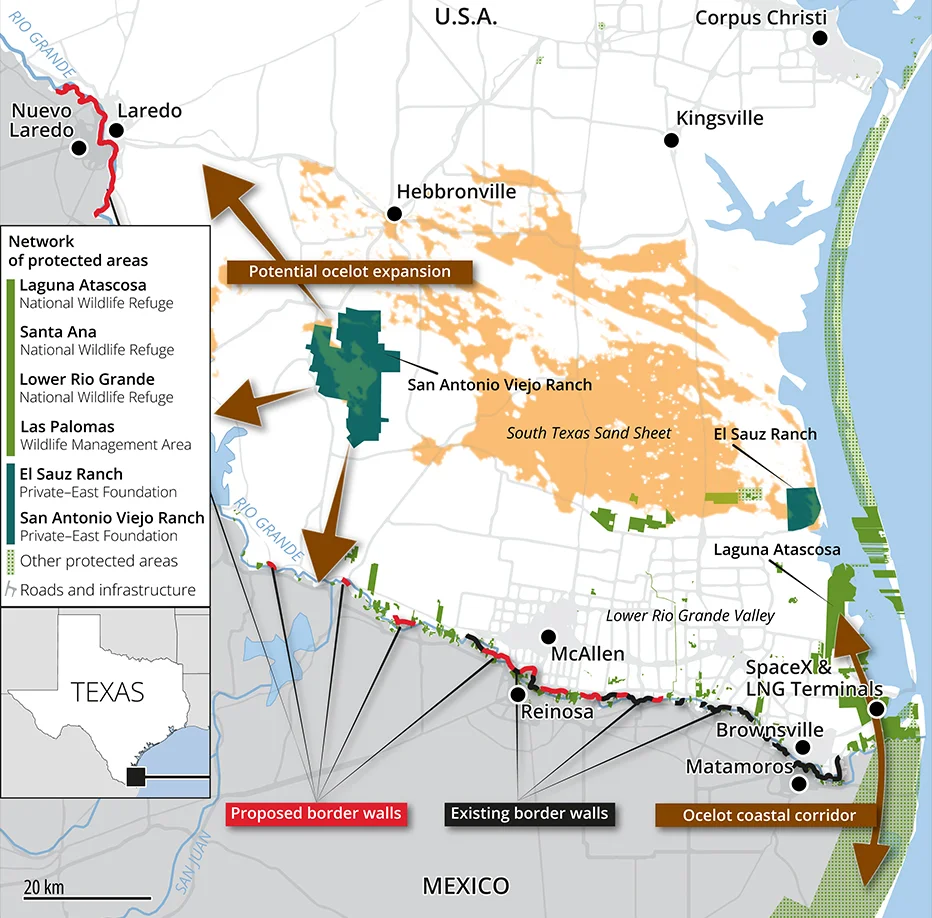
There Is Hope for the Texas Ocelot
The long-term goal of the Texas ocelot conservation effort isn’t just to increase numbers, but to establish a self-sustaining population that can survive and thrive without human intervention.
This involves creating a network of habitats and ensuring genetic diversity to withstand environmental changes and diseases.
Broader Implications for Wildlife Conservation
The success of this program could have far-reaching implications, setting a precedent for conservation efforts involving private lands and partnerships. It could also provide valuable insights into the management and recovery of other endangered species facing similar challenges.
The plight of the Texas ocelot and the innovative efforts to save it mark a critical juncture in wildlife conservation.
This initiative, blending traditional and novel strategies and involving diverse stakeholders, could pave the way for a new model in preserving our planet’s endangered species. The story of the Texas ocelot is a testament to the resilience of nature and the power of collaborative conservation.







